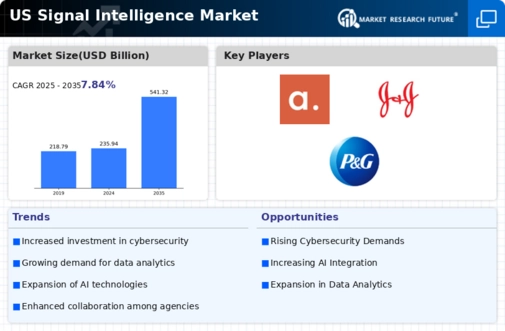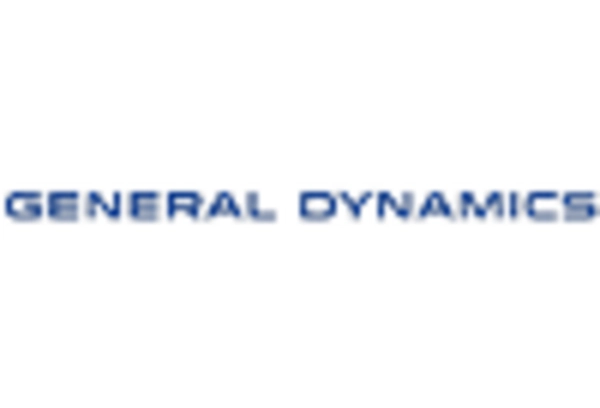Growing Demand for Real-Time Data Analysis
The signal intelligence market is experiencing a notable surge in demand. This demand is for real-time data analysis capabilities. Organizations across various sectors, including defense, telecommunications, and finance, are increasingly reliant on timely insights derived from signal intelligence. This trend is driven by the need to make informed decisions quickly, particularly in high-stakes environments. According to recent estimates, the market for real-time analytics in the signal intelligence sector is projected to grow at a CAGR of approximately 15% over the next five years. As businesses recognize the value of immediate data interpretation, investments in advanced analytics tools and technologies are likely to escalate, further propelling the growth of the signal intelligence market. This growing emphasis on real-time data is reshaping operational strategies and enhancing competitive advantages for organizations that effectively leverage these insights.
Emergence of Smart Cities and IoT Applications
The emergence of smart cities and the proliferation of Internet of Things (IoT) applications are driving new opportunities. These opportunities exist within the signal intelligence market. As urban areas become increasingly interconnected, the need for effective signal intelligence solutions to manage and analyze data from various sources is paramount. Smart city initiatives often rely on real-time data to optimize traffic management, enhance public safety, and improve resource allocation. The market for signal intelligence solutions tailored for smart city applications is projected to grow substantially, with estimates indicating a potential increase of 30% in demand over the next five years. This trend underscores the importance of signal intelligence in facilitating the development of intelligent urban environments, thereby contributing to the overall growth of the market.
Expansion of Military and Defense Applications
The signal intelligence market is significantly influenced by the expansion of military and defense applications. This expansion is driven by increasing geopolitical tensions and the need for enhanced national security. With increasing geopolitical tensions and the need for enhanced national security, defense agencies are investing heavily in advanced signal intelligence systems. The U.S. Department of Defense has allocated substantial budgets for the development and procurement of sophisticated signal intelligence technologies, which are essential for surveillance, reconnaissance, and threat detection. Recent reports indicate that defense spending on signal intelligence is expected to reach approximately $10 billion by 2026. This investment not only supports the modernization of existing systems but also fosters innovation in the development of next-generation signal intelligence solutions. As military operations become more complex, the demand for advanced signal intelligence capabilities is likely to continue its upward trajectory, thereby driving growth in the market.
Rising Importance of Data Privacy and Security
As concerns regarding data privacy and security intensify, the signal intelligence market is witnessing a shift. This shift is towards solutions that prioritize these aspects. Organizations are increasingly aware of the potential risks associated with data breaches and unauthorized access to sensitive information. Consequently, there is a growing demand for signal intelligence systems that incorporate robust security measures and comply with regulatory standards. The market is expected to see a rise in investments aimed at enhancing data protection capabilities, with estimates suggesting that spending on security features within signal intelligence solutions could increase by 25% over the next few years. This heightened focus on data privacy not only influences purchasing decisions but also shapes the development of new technologies within the signal intelligence market.
Integration of Artificial Intelligence and Machine Learning
The integration of artificial intelligence (AI) and machine learning (ML) technologies into the signal intelligence market is transforming the landscape. This transformation affects data processing and analysis. These technologies enable organizations to automate the extraction of valuable insights from vast amounts of signal data, enhancing efficiency and accuracy. AI and ML algorithms can identify patterns and anomalies that may be overlooked by traditional methods, thereby improving decision-making processes. The market for AI-driven signal intelligence solutions is anticipated to grow significantly, with projections suggesting a CAGR of around 20% over the next few years. This integration not only streamlines operations but also empowers organizations to respond proactively to emerging threats, making it a critical driver of growth in the signal intelligence market.

















Leave a Comment